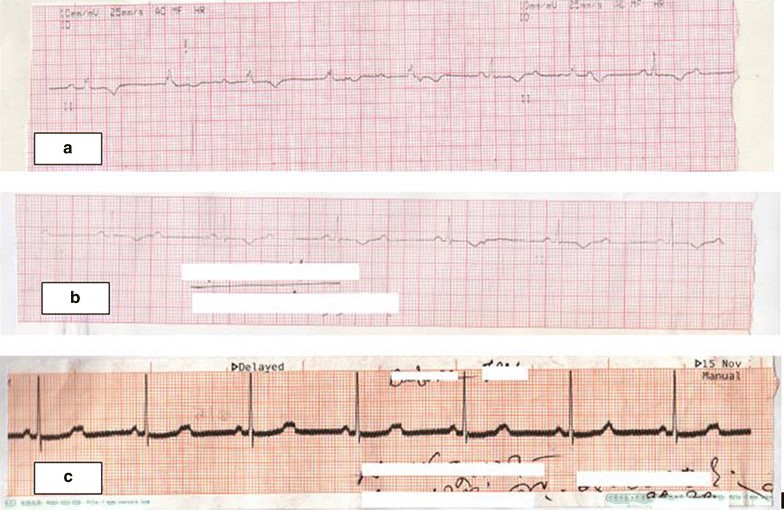The pacemaker-twiddler's syndrome: an infrequent cause of pacemaker failure
- PMID: 26790626
- PMCID: PMC4721019
- DOI: 10.1186/s13104-015-1818-0
The pacemaker-twiddler's syndrome: an infrequent cause of pacemaker failure
Abstract
Background: The pacemaker-twiddler's syndrome is an uncommon cause of pacemaker malfunction. It occurs due to unintentional or deliberate manipulation of the pacemaker pulse generator within its skin pocket by the patient. This causes coiling of the lead and its dislodgement, resulting in failure of ventricular pacing. More commonly reported among elderly females with impaired cognition, the phenomenon usually occurs in the first year following pacemaker implantation. Treatment involves repositioning of the dislodged leads and suture fixation of the lead and pulse generator within its pocket.
Case presentation: An 87 year old Bangladeshi lady who underwent a single chamber ventricular pacemaker (VVI mode: i.e. ventricle paced, ventricle sensed, inhibitory mode) implantation with the indication of complete heart block, and presented to us again 7 weeks later, with syncopal attacks. She admitted to repeatedly manipulating the pacemaker generator in her left pectoral region. Physical examination revealed a heart rate of 42 beats/minute, blood pressure 140/80 mmHg and bilateral crackles on lung auscultation. She had no cognitive deficit. An immediate electrocardiogram showed complete heart block with pacemaker spikes and failure to capture. Chest X-ray showed coiled and retracted right ventricular lead and rotated pulse generator. An emergent temporary pace maker was set at a rate of 60 beats per minute. Subsequently, she underwent successful lead repositioning with strong counselling to avoid further twiddling.
Conclusion: Twiddler's syndrome should be considered as a cause of pacemaker failure in elderly patients presenting with bradyarrythmias following pacemaker implantation. Chest X-ray and electrocardiograms are simple and easily-available first line investigations for its diagnosis. Lead repositioning is required, however proper patient education and counselling against further manipulation is paramount to long-term management.
Figures



References
-
- Sharifi M, Inbar S, Neckels B, Shook H. Twiddling to the extreme: development of twiddler syndrome in an implanted cardioverter-defibrillator. J Invasive Cardiol. 2005;17:195–196. - PubMed
-
- DeMarco DC, Xuereb RG. ‘Twiddling’ of the pacemaker resulting in lead dislodgement. Malta Med J. 2009;21(3):38–41.
Publication types
MeSH terms
LinkOut - more resources
Full Text Sources
Other Literature Sources
Medical

